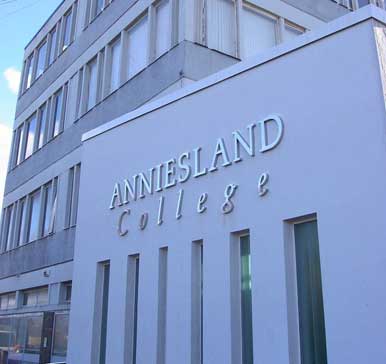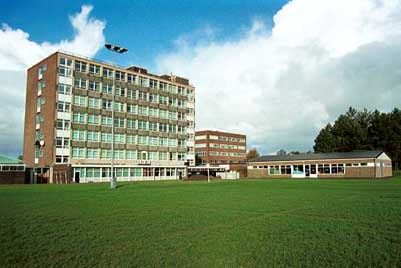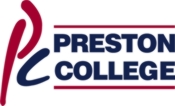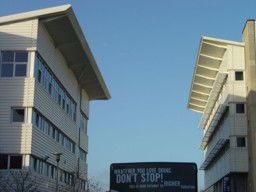
The Partner Colleges
The Literacies for Learning in Further Education (LfLFE) project is a collaboration between researchers at two universities - Stirling and Lancaster - and lecturers at four colleges, Anniesland, Lancaster and Morecambe, Preston and Perth.
|
Curriculum Based Researchers (CBRs) at Anniesland College:Accounts - Janet Gray Childcare - Rosheen Young Multimedia - Mike Ward Social Sciences - Jim Carmichael (CBRC)
|
Anniesland College is situated on two campuses in the West End of Glasgow, three miles from the city centre. The College is proud of its reputation as a friendly community college and has recently been awarded the Charter Mark for Excellence for the third consecutive time. It endeavours to work closely with community organisations both formally and informally. The College provides over 100 community based adult learning programmes in conjunction with Community Learning, many of which are delivered in local centres and halls across Glasgow. Anniesland college is organised into 7 schools, providing 12,000 students from over 100 nationalities with full-time and part-time courses in the following areas: Business, Communication, Languages & Media, Computing, Design & Construction, Engineering, Hospitality, Leisure & Creative Arts and Social & Community Studies. The seven schools offer a range of qualifications from SQA Highers and SVQs to Higher National Diploma (HND) level. Our courses attract students to Scotland from over 50 countries worldwide and offer international students excellent opportunities both to study English Language and gain qualifications in other subject areas. As well as strong links with industry and commerce, Anniesland College has close connections with the Universities of Glasgow, Paisley, Strathclyde and Caledonian to provide higher national students with articulation routes into related degree programmes. |
|
Curriculum Based Researchers (CBRs) at Lancaster and Morecambe CollegeCatering and Hospitality - Sarah Wilcock (CBRC) Childcare - Christine Phillipson Media Studies - Patrick Marsh Travel and Tourism - David Jarratt
|
Lancaster and Morecambe College is situated mid-way between Lancaster and Morecambe. One approaches the college from either the south or the north. From the south, the college is approached down a speed-bumped road with open playing fields on both sides; from the north one turns into a large car park. While the college is visible from the main road, the size of its grounds means that the college buildings do not dominate. Car-parking is ample, and there is no sense of a shortage of space for future building plans. There are a variety of college buildings on the main campus including the small A Level and Access building that is detached from the other buildings, two high rise blocks, some smaller buildings including some prefabricated buildings, and a large construction area. Inside the college, the corridors and classrooms are well-maintained. The reception area is busy and bustling, dominated by the open access area of Student Services. A Bistro, serving up the catering students' cooking, and a shop run-by students are adjacent to the reception. The main site on Morecambe Road has been providing further education since the 1950s, but although LMC is one of the most successful providers of education and training for the local area there is a massive amount of competition in terms of the number of 6th forms available to students leaving school. Students are recruited from a variety of areas. The main bulk of the students are local (Lancaster, Morecambe, Heysham and surrounding villages) but the free bus service means that students also come from Kendal, Barrow and Ulverston and as far south as Garstang and Preston. There are currently 2000 full time and 5100 part time students (approximately). back to top |
|
Curriculum Based Researchers (CBRs) at Perth CollegeChildcare - Joyce Gaechter (CBRC) Construction - Roy Anderson Hospitality - Ian Gibb Music and Audio - Ronnie Goodman
|
Perth College provides education and training opportunities to local communities through a main campus and a network of learning centres in the surrounding rural areas of Aberfeldy, Blairgowrie, Crieff, Kinross and Pitlochry. It runs a wide range of courses designed to meet the needs of industry and commerce, including nationally recognised qualifications like NQs, HNCs and HNDs. An increasing number of degrees are on offer through its membership of the University of the Highlands and Islands Millennium Institute. Students enjoy some of the best facilities in the country, thanks to a multi-million pound development programme which includes the building of: a study centre; a music and media centre; an advanced technology centre; a nursery and soon a new student centre.
|
|
Curriculum Based Researchers (CBRs) at Preston CollegeBusiness Administration - Angela Brzeski (CBRC) and Christine Kendrick Childcare - Joanne Knowles Construction - Dave Brown/Sharon Aspden English - Angela Brzeski Human Biology - Sandra Mulligan |
Preston College is one of the largest FE colleges in England with somewhere between 20,000 and 30,000 students enrolled at any one time. This includes 4,000 full-time 16 - 18 year olds and 1,500 adults enrolled on full-time courses. As well as courses being delivered on the main site, there are also courses delivered on another teaching site, centres within schools, and a local outreach centre at the PC World superstore. The main college site is vast - many buildings joined together by walkways. Central to the site is the "High Street" which contains shops and eating areas. On one side of this is the prominent sports building, on the other the A Level Centre. Both these buildings were recently built, and share the same similar white designs. Further into the site are a collection of smaller and older buildings which house the faculities, learning centres, and the main library. The college prides itself on the high level of care and support it provides for its students. Display boards frequently feature students' work and case studies of students who have progressed from the college. There is little sign of grafitti. All areas of the curriculum have entry-level courses and there is a firm commitment to equal opportunities across the college. |
The project team prepared an overview and comparison of the four colleges, as well as a comparison of qualifications in England and Scotland.
| People & Links | Publications | Workshop Materials | Contact |







